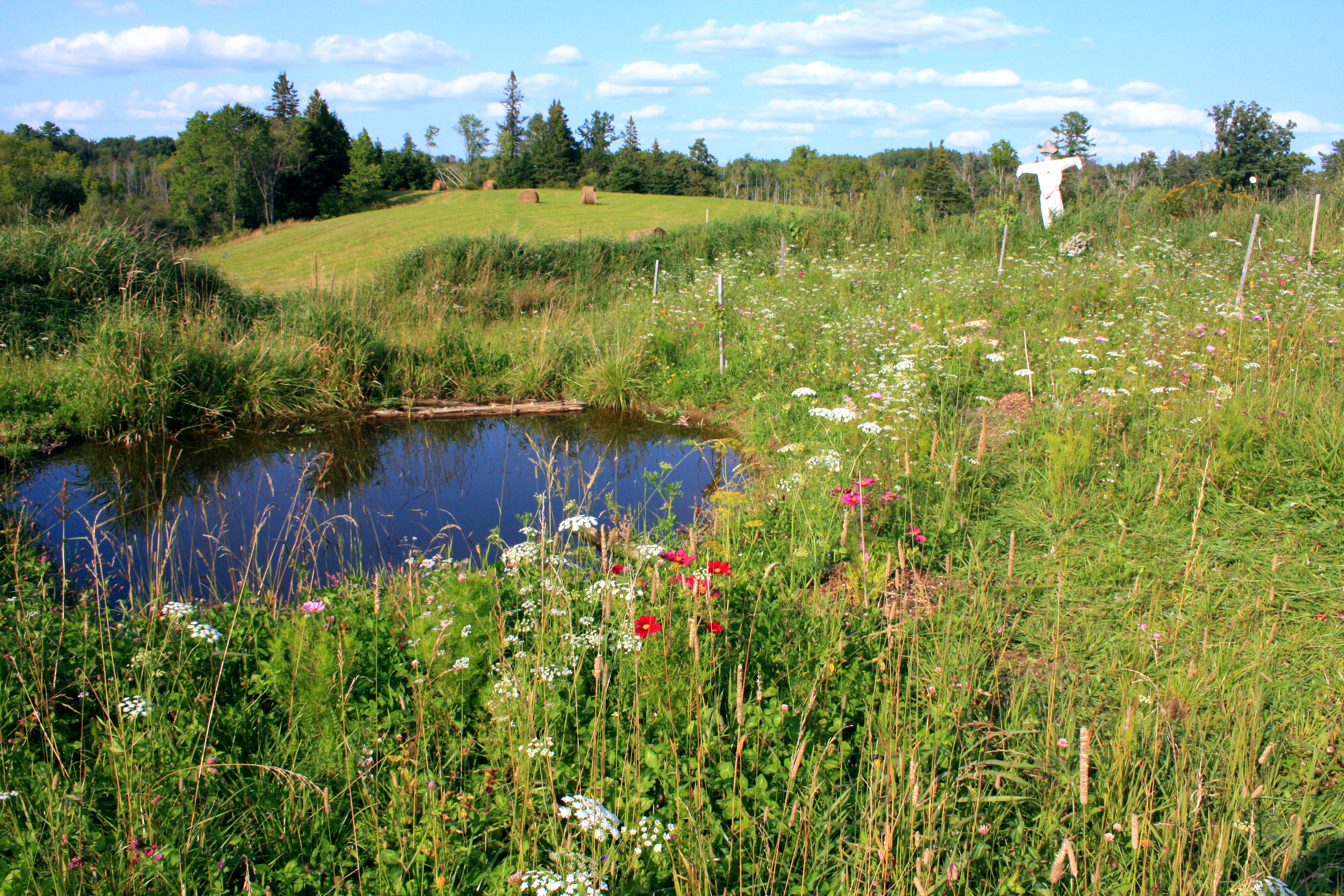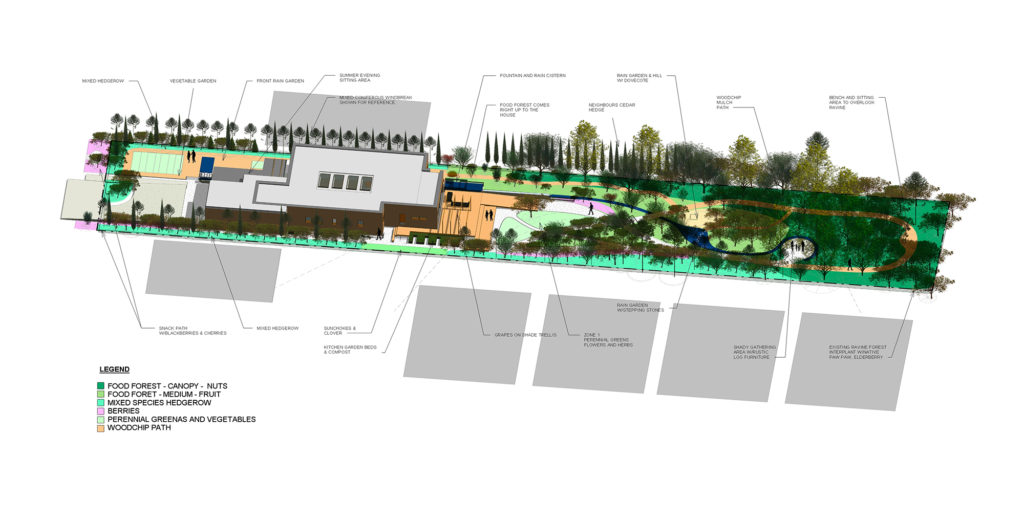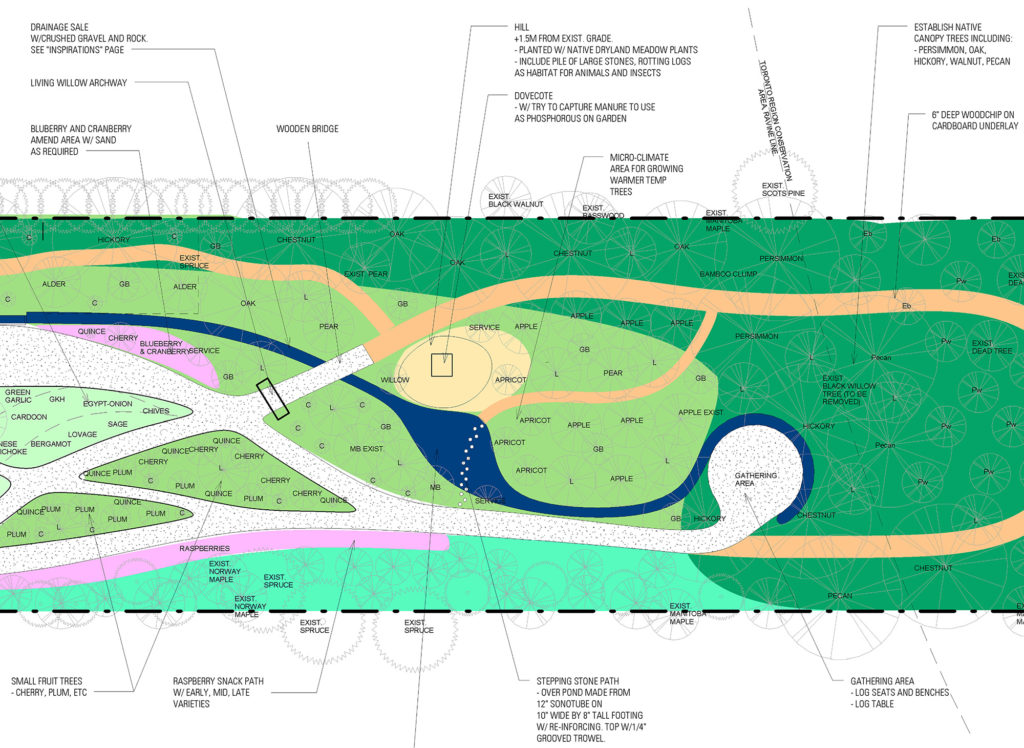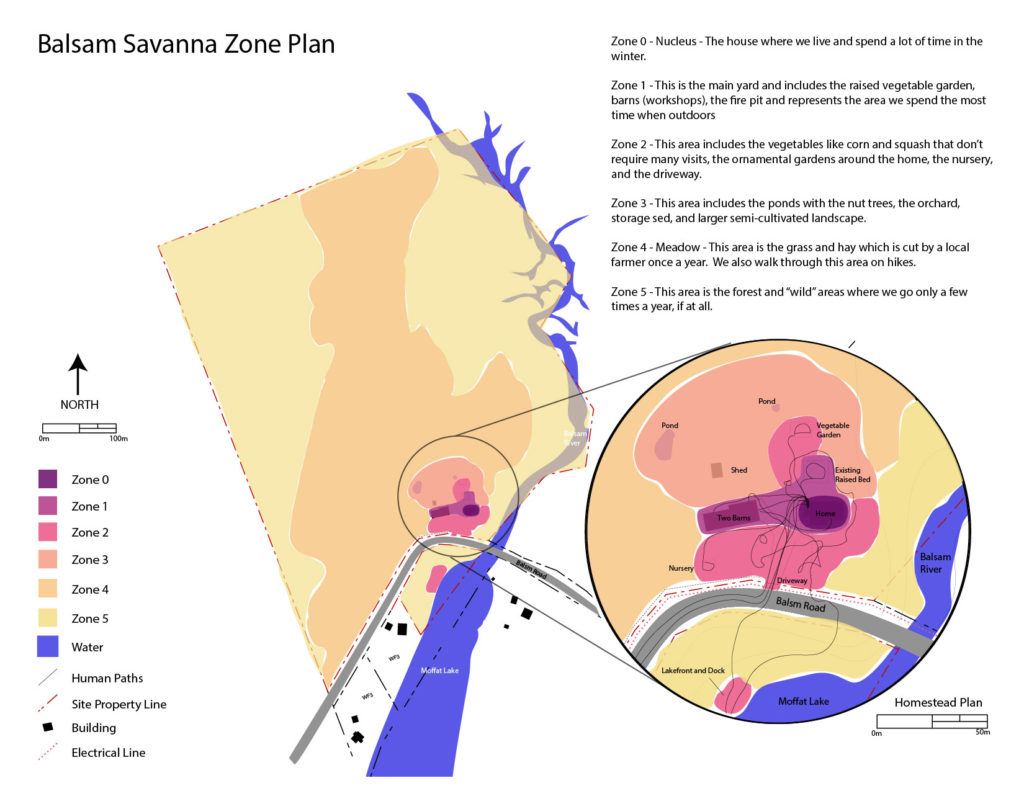Integrated Permaculture Design

Permaculture is a design approach to creating integrated landscapes of people and nature – that benefits both.
At Coolearth we envision modern homes, cottages, workplaces, schools, and campuses integrated within lush, beautiful, delicious perennial food forests and ecosystems.


The philosophy behind permaculture is one of working with, rather than against, nature; of protracted and thoughtful observation; of looking at systems in all their functions; and of allowing systems to demonstrate their own evolution’s.
Permaculture design works with energy (sun, wind, water, snow) that come onto the site to improve life and health. It is based on observation, discussion, mapping, design thinking, knowledge, and management. By careful observation and the use of strategies that have been developed and shared from across North America and the world it is possible to create integrated landscapes
Benefits of our Permaculture Design include:
Design and Beauty
Lush, picturesque, landscapes which are also edible, delicious, and nutritious. As designers, we bring a track record of creating and delivering elegant and functional designs, at many scales.
Low-Maintenance & Durable
Landscapes with positive yield (food and mulch as opposed to gas fumes) and low maintenace sites, that are durable and last as long as possible
Resilience & Food Security
Ensure essentials needs are met (wood fireplace for heating, rainwater and grey-water collection, tuber and forage crops).
Bio-diversity & Health
Attract and provide homes for beneficial insects like bees, and sensitive creatures like salamanders
Yield & Food
Healthy, organic food grown at your doorstep. Fuelled by the sun, wind, rain, the systems should meet not only on-site needs by also the needs of people and communities.
Micro-climates & Comfort
Leveraging energy flows (wind, sun, rain, snow) on your site, we can improve health. Planting trees and perennial crops, as well as the use of mulch and compost helps embody carbon in the soil for generations.
Our Services include the following:
- – Site Analysis
- – Goals/needs/desires/programming
- – Site Design,
- – Site Circulation – paths, roads, access
- – Zones of Use
- – Sector Analysis – incoming energy flows (sunlight, wind, water)
- – Gardens, food forests, ponds, swales
- – Greenhouses, shadehouses, sunrooms
- – Vision and brainstorming
- – Strategy and Phasing
- – Collaboration with engineers, landscape architects, and other professionals

Permaculture Resources
The examples of permaculture systems implemented to date show the great possibilities. See below for a few exciting examples:
| Martin Crawford – Food Forest, England, Video | Geoff Lawton – Pioneer, Zaytuna Farms, Australia, food forest, educator | Rob Heart – Shropshire, 1960-70’s |
| Verge Permaculture – Urban permaculture in Edmonton | Corsica Chestnut Groves – pigs, cows, goats and chestnut tree sivipasture | Myvatin Lakes – Iceland |
| Ancient Woodland – Forest of England, lumber system with oaks, hazels, etc | Ben Falk — “Whole Systems Design” | Bullock Brothers Farmstead |
Books:
| Bill Mollison, co-founder of Permaculture — “Introduction to Permaculture” & “Permaculture Designers Manual” | Toby Hemenway — “Permaculture in the City”, “Gaia’s Garden” | Ken Mudge & Steve Gabriel — “Farming the Woods” |
| Eric Toensmeier & Jonathan Bates — “Paradise Lot” | Masonobu Fukoku — “The One Straw Revolution” |
Videos:
| Inhabit | John Liu — “Green Gold” | Geoff Lawton |
| Robert and Robyn Guyton — “Food Forest” | Thomas Woltz — “From landscape architecture to conservation agriculture” | Bill Mollinson — “In Grave Danger of Falling Food” |
Podcasts:
Scott Mann — Permaculture Podcast
Diego Footer — Creative Destruction
